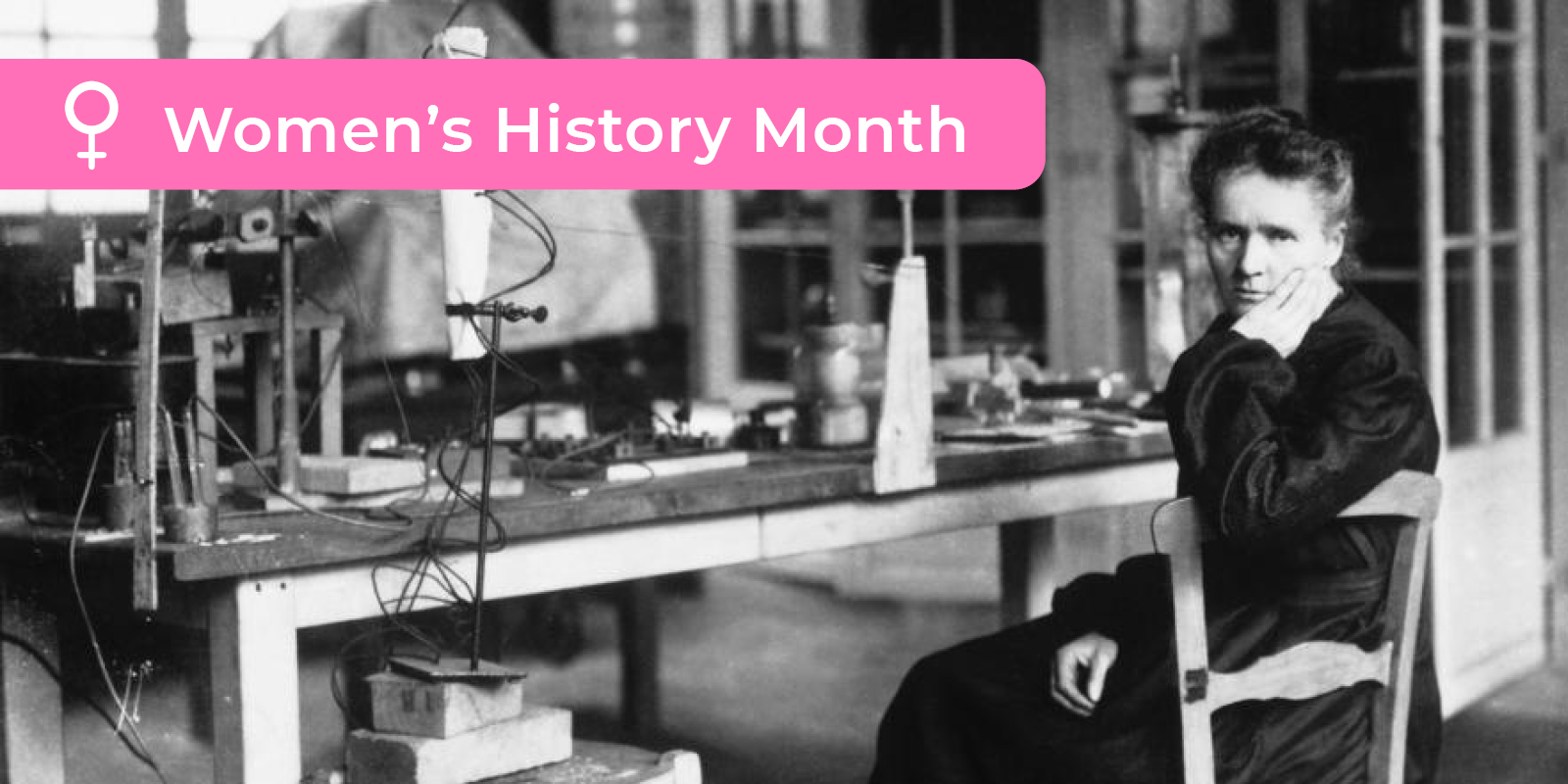Women’s History Month
Throughout history, women have played a crucial role in the advancement of radiology and breast imaging, breaking barriers and setting new imaging and safety standards.
As we recognize Women’s History Month, this article highlights just a few of the pioneering women whose contributions have been instrumental in shaping the fields of mammography and radiology, combining passion, innovation, and dedication to advance medical science and help save countless lives.
Early Days of X-Rays & Radiology

Marie Curie
1867-1934
A name synonymous with radiology, Marie Curie’s groundbreaking research on radioactivity laid the foundation for the use of X-rays in diagnosis and treatment. Her mobile X-ray units during World War I significantly improved medical care for soldiers, earning her a legacy as a pioneer in radiological science. Curie was the first woman to win a Nobel Prize and remains the only person to win Nobel Prizes in two different scientific fields (Physics and Chemistry).
Although not exclusively focused on breast cancer, Curie’s work paved the way for radiation-based diagnostic tools, including mammography.
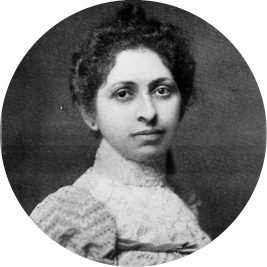
Elizabeth Fleischmann
1867-1905
An American pioneer in the field of radiology, Elizabeth Fleischmann used X-ray technology in the late 19th century to diagnose diseases. Dr. Fleischmann established her own X-ray laboratory in San Francisco around 1896 where she examined patients on behalf of local physicians.
Despite facing the dangers of radiation exposure, her work provided invaluable insights into the medical and dental applications of X-rays. Sadly, radiation-induced cancer led to the amputation of her right arm, ultimately resulting in her death.
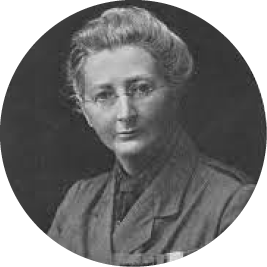
Florence Stoney
1870-1932
Dr. Florence Stoney made history by becoming the first female radiologist in the United Kingdom. She was a trailblazer, breaking gender barriers in a male-dominated field in the early 20th century.
Dr. Stoney set up the X-ray department at the Royal Free Hospital in London. Her leadership and expertise were instrumental in establishing radiology as a legitimate medical discipline. Through her work, Dr. Stoney contributed to diagnosing various conditions, including breast abnormalities. Her commitment to patient care and accurate diagnosis influenced establishing radiology as a vital medical specialty, significantly impacting diagnostic medicine.
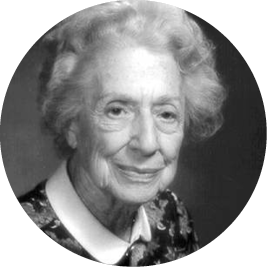
Alice Ettinger
1899-1993
Dr. Alice Ettinger was a prominent radiologist and professor of medicine at Tufts University School of Medicine. Ettinger brought the technique of spot-film imaging to the United States in 1932.
In 1982, Ettinger received a Gold Medal from the Radiology Society of North America, and in 1984 she won the Gold Medal Award from the American College of Radiology for distinguished service and dedication to the field of radiology.
Research & Discovery
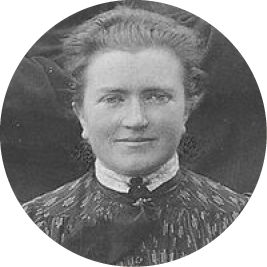
Janet Lane-Claypon
1877-1967
A pioneer in epidemiology, Janet Lane-Claypon applied her statistical skills to study breast cancer. She was the first woman ever to receive a research scholarship from the British Medical Society, focusing her doctoral research on the developmental histology of the ovary and the hormonal control of lactation.
Her research study on breast cancer cases resulted in findings including most of the currently recognized risk factors for breast cancer.
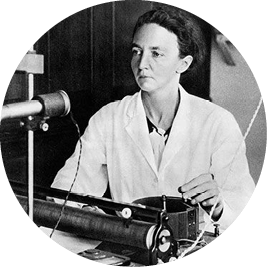
Irene Joliot-Curie
1897-1956
Irene Curie worked alongside her mother, Marie Curie, as a nurse radiographer during WWI and taught doctors how to locate shrapnel in soldiers using radiological equipment.
In 1935, she shared a Nobel Prize with her husband, Frederic Joliot, for the discovery that radioactive elements can be artificially produced from stable elements. This discovery was used specifically in the medical field, aiding in the treatment of thyroid diseases.
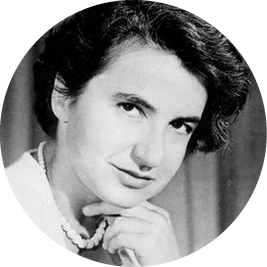
Rosalind Franklin
1920-1958
British scientist Rosalind Franklin applied radiation science and her study of X-ray diffraction to her work in unique ways. Using x-ray crystallography, she confirmed that the DNA molecule has a double-helix structure.
She applied the same technology to investigate the physical chemistry of carbon and coal, enabling improvements in the production of gas masks during WWII. Due to her work, x-ray crystallography became a foundation for the study of viruses that harmed plants, and she worked on studying the polio virus before she died of cancer at 37.
Radiation Safety
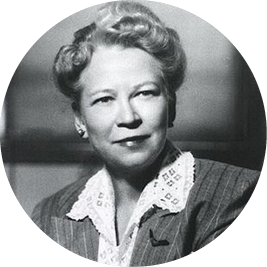
Edith Quimby
1891-1982
Edith Quimby was an American medical physicist, best known as one of the founders of nuclear medicine, and her work involved developing diagnostic and therapeutic applications of X-rays.
Quimby’s research into radiation dosages and their effects made her a key figure in the safe medical use of X-rays. Her guidelines for radiation exposure are still referenced today, underscoring her lasting impact on radiological safety.
Education & Leadership
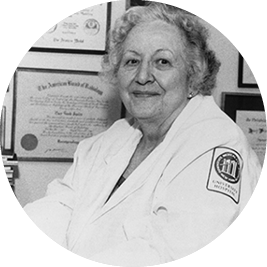
Lucy Frank Squire
1915-1996
Dr. Lucy Frank Squire was the first woman to be enrolled as a resident in Massachusetts General Hospital’s radiology program in 1940 and the first woman radiologist to receive the AAWR Marie Sklodowska-Curie Award in 1986.
Dr. Squire was an outstanding radiologist who taught multiple generations of students at the State University of New York (SUNY) Health Science Center. In 1964, Dr. Squire published the first edition of her landmark book Fundamentals of Radiology which has become a standard introductory text for radiology. Dr. Squire received the Gold Medal of the RSNA in 1972.
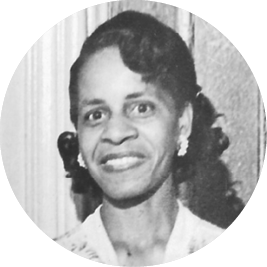
Ivy O. Brooks
1916-1986
Dr. Ivy O. Brooks was the first African-American woman leader in radiology, serving as chief of radiology at Tuskegee VA Hospital from 1966-1986.
Before starting that prestigious role, Dr. Brooks served as a nurse and lieutenant in the Women’s Army Corp. She completed medical training in diagnostic radiology and radiation therapy, and she began her radiology practice in 1958.
These incredible women are just a few of the early pioneers in science that led us to where we are today in the field of radiology and mammography. Their relentless pursuit of knowledge and innovation laid the foundation upon which modern advancements thrive.
Women in STEM continue to make bold scientific contributions that are advancing patient care, pushing the boundaries of technology, and revolutionizing our understanding of the human body. From developing cutting-edge imaging techniques to spearheading AI radiology applications that drive personalized medicine, these brilliant minds are at the forefront of innovation. Their diverse perspectives and unwavering determination not only enrich the scientific community but also inspire future generations to pursue careers in science, technology, engineering, and mathematics.
As we celebrate National Women’s Month, let us honor these modern-day pioneers and reaffirm our commitment to fostering an inclusive and equitable environment where women can thrive and continue to shape the future of science.
Do you have an inspiring story of Women in STEM that you want highlighted?
Email iCAD at marketing@icadmed.com
